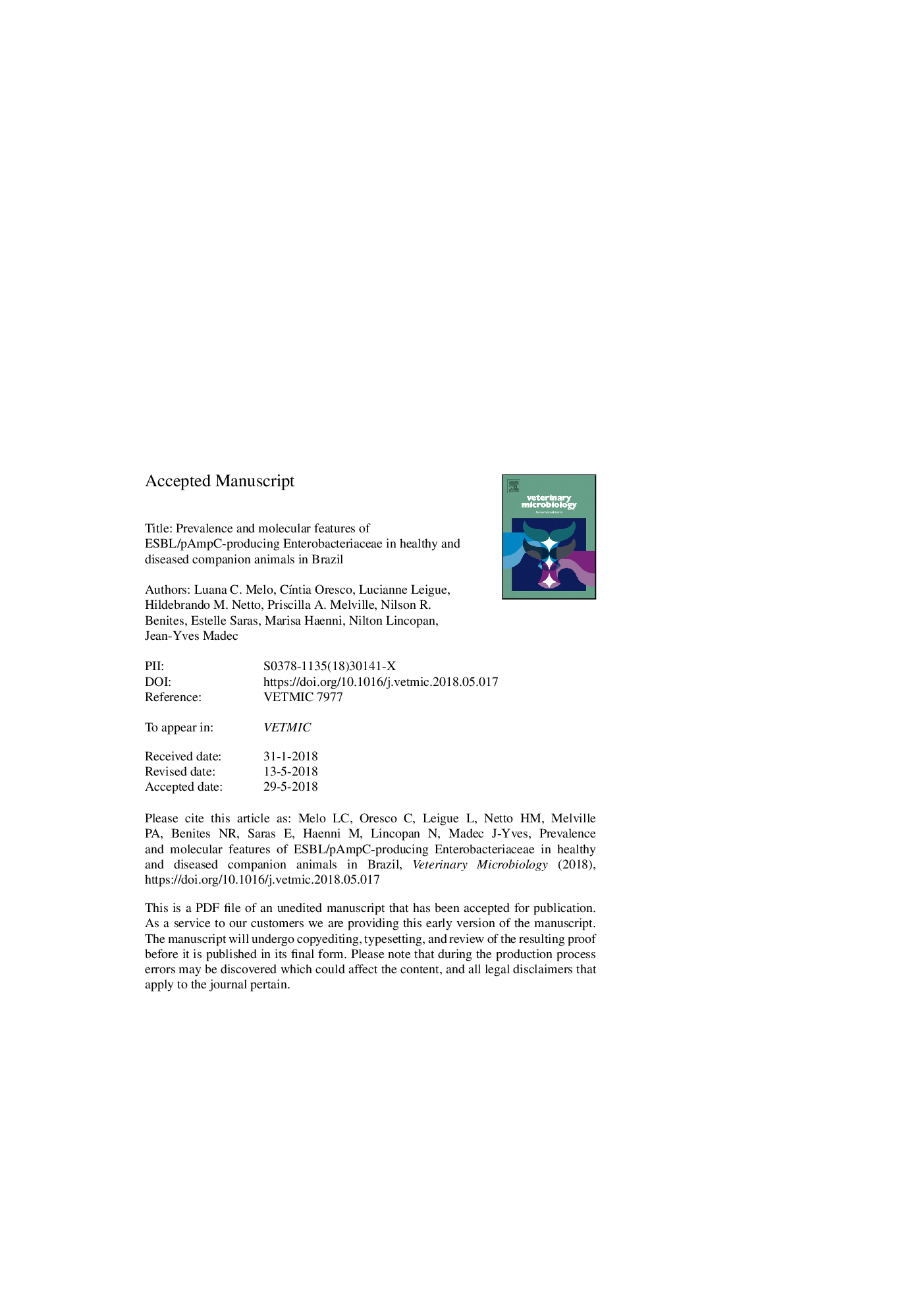| کد مقاله | کد نشریه | سال انتشار | مقاله انگلیسی | نسخه تمام متن |
|---|---|---|---|---|
| 8505211 | 1555302 | 2018 | 24 صفحه PDF | دانلود رایگان |
عنوان انگلیسی مقاله ISI
Prevalence and molecular features of ESBL/pAmpC-producing Enterobacteriaceae in healthy and diseased companion animals in Brazil
دانلود مقاله + سفارش ترجمه
دانلود مقاله ISI انگلیسی
رایگان برای ایرانیان
موضوعات مرتبط
علوم زیستی و بیوفناوری
علوم کشاورزی و بیولوژیک
علوم دامی و جانورشناسی
پیش نمایش صفحه اول مقاله

چکیده انگلیسی
Extended-spectrum beta-lactamase (ESBL)- and plasmid-mediated AmpC (pAmpC)-carrying Enterobacteriaceae have widely disseminated in human, animal and environmental reservoirs. Pets have been recognized as a source of ESBL/pAmpC worldwide, and are possibly also a source of human contamination. The aim of this study was to document to what extent cats and dogs may act as a driving force in the spread of ESBLs and pAmpCs in Brazil. A total of 113 healthy stray cats and dogs and 74 sick pets were sampled, and extended-spectrum cephalosporin-resistant Enterobacteriaceae (ESC-R) were detected in 28/113 (24.8%) and 8/74 (10.8%) tested animals, respectively. Different Enterobacteriaceae isolates (mostly E. coli), a large number of E. coli clones (with ST90, ST457, ST973 and ST2541 being predominant), and several ESBL/pAmpC genes and plasmids were characterized, highlighting the ability of stray and pet cats and dogs to further spread a wide range of ESC-resistance determinants. The ESBL phenotype was due to the blaCTX-M-2 and blaCTX-M-8 genes, as found in human epidemiology in Brazil, but blaCTX-M-9 and blaCTX-M-15 were also identified. The pAmpC phenotype was systematically due to the presence of the blaCMY-2 gene, mostly carried by IncI1 ST12 plasmids. Our results showed that pets can be considered a significant reservoir of multidrug-resistant bacteria in Brazil. This is especially true for healthy stray dogs that displayed the highest prevalence (24.8%) of ESBLs/pAmpC resistance determinants, which can then be further spread both to the environment and to other animals or humans by contact.
ناشر
Database: Elsevier - ScienceDirect (ساینس دایرکت)
Journal: Veterinary Microbiology - Volume 221, July 2018, Pages 59-66
Journal: Veterinary Microbiology - Volume 221, July 2018, Pages 59-66
نویسندگان
Luana C. Melo, CÃntia Oresco, Lucianne Leigue, Hildebrando M. Netto, Priscilla A. Melville, Nilson R. Benites, Estelle Saras, Marisa Haenni, Nilton Lincopan, Jean-Yves Madec,